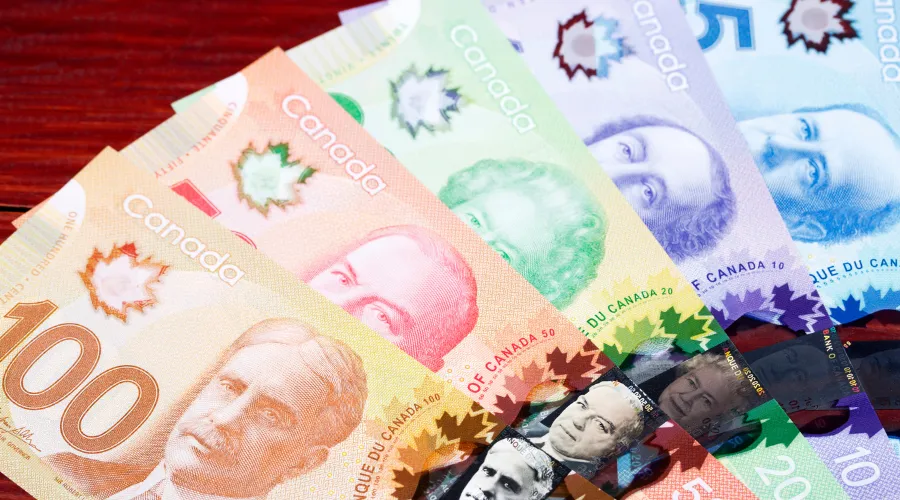Tax Toolkit 2025: New CPP, TFSA, HBP Limits and Capital Gains Deferral Strategies

In the ever-shifting landscape of Canadian finance, the tax toolkit 2025 is your compass for navigating the complexities of new tax rules and opportunities.
With updates to the Canada Pension Plan (CPP), Tax-Free Savings Account (TFSA), Home Buyers’ Plan (HBP), and looming capital gains tax changes, Canadians face both challenges and possibilities in 2025.
These changes demand a proactive approach to financial planning—think of it like assembling a puzzle where each piece, from contribution limits to deferral strategies, must fit perfectly to secure your wealth.
This article dives into the latest updates, offering fresh insights, actionable strategies, and creative approaches to help you thrive in this dynamic environment.
Ready to unlock the full potential of your tax toolkit 2025? Let’s explore.
CPP Enhancements: A Double-Edged Sword for Your Paycheck
The Canada Pension Plan is evolving, with 2025 introducing a second tier of contributions for higher earners.
This change aims to bolster retirement security but comes at a cost.
For 2025, the CPP contribution rate remains 5.95% for employees (11.9% for self-employed), but the Year’s Maximum Pensionable Earnings (YMPE) rises to $73,200, up from $68,500 in 2024.
Additionally, the new second tier applies to income between the YMPE and a new ceiling of $82,700, with a 4% contribution rate on this excess amount.
For a high earner making $100,000 annually, this translates to an extra $380 in contributions compared to 2024.
This isn’t just a payroll deduction—it’s a signal to reassess your cash flow.
Higher contributions mean less take-home pay, but they also promise enhanced retirement benefits down the line.
For self-employed individuals, the sting is sharper, as they bear both employer and employee portions.
Yet, there’s a silver lining: these contributions are tax-deductible, softening the immediate blow.
A savvy move? Adjust your budget now to account for the increased deductions and explore tax-advantaged accounts to offset the impact.
Why let the CRA dictate your financial rhythm when you can set the tempo?
Table 1: CPP Contribution Limits for 2025
| Category | 2024 | 2025 |
|---|---|---|
| Year’s Maximum Pensionable Earnings (YMPE) | $68,500 | $73,200 |
| Basic Exemption | $3,500 | $3,500 |
| Employee Contribution Rate | 5.95% | 5.95% |
| Second Tier Ceiling | N/A | $82,700 |
| Second Tier Contribution Rate | N/A | 4% |
Example 1: The Freelancer’s Dilemma
Meet Sarah, a freelance graphic designer earning $90,000 in 2025.
Her CPP contributions jump from $7,609 in 2024 to $8,316 due to the new YMPE and second-tier rules.
To mitigate this, Sarah funnels her increased deductions into a tax-deductible RRSP contribution, lowering her taxable income and reclaiming some control over her cash flow.
By planning early, she turns a tax burden into a retirement-building opportunity.
In addition to adjusting contributions, it’s important for individuals to explore other retirement savings options to enhance their financial stability.
Understanding how these contributions affect overall retirement planning can lead to more informed decisions.
+ Canada Adjusts Steel & Aluminum Tariffs: What This Means for Your Wallet in 2025
TFSA: Your Tax-Free Powerhouse
The Tax-Free Savings Account remains a cornerstone of the tax toolkit 2025, with its contribution limit rising to $7,000, up from $6,500 in 2024.
For Canadians who’ve never contributed and were 18 or older in 2009, the cumulative limit now sits at $102,000.
This tax-free haven shields investment income—whether dividends, interest, or capital gains—from the CRA’s reach.
A recent BMO survey revealed that 76% of Canadians are increasingly worried about inflation in 2025, making the TFSA’s tax-free growth a critical tool for preserving purchasing power.
Unlike RRSPs, TFSAs offer unmatched flexibility.
Withdraw funds today, and your contribution room resets next year.
This makes it ideal for short-term goals, like a down payment, or long-term wealth-building.
However, the CRA’s stricter validation processes in 2025 mean you must track your contribution room diligently.
Overcontributions trigger a 1% monthly penalty on the excess amount—a costly misstep.
To maximize your TFSA, diversify your holdings.
Consider a mix of dividend-paying stocks like Canadian Natural Resources (CNQ), which reported record production in Q1 2025, and stable ETFs for balanced growth.
Political proposals, like Pierre Poilievre’s plan to add $5,000 to TFSA limits for investments in Canadian companies, could further sweeten the deal, though this remains speculative for now.
How will you wield this tax-free superpower to outpace inflation and secure your financial future?

Table 2: TFSA Contribution Limits (2009–2025)
| Year | Annual Limit | Cumulative Limit |
|---|---|---|
| 2009–2012 | $5,000 | $20,000 |
| 2013–2014 | $5,500 | $31,000 |
| 2015 | $10,000 | $41,000 |
| 2016–2018 | $5,500 | $57,500 |
| 2019–2020 | $6,000 | $69,500 |
| 2021–2022 | $6,000 | $81,500 |
| 2023 | $6,500 | $88,000 |
| 2024 | $6,500 | $94,500 |
| 2025 | $7,000 | $102,000 |
Example 2: The Young Investor’s Edge
Consider Liam, a 30-year-old software developer with $50,000 in his TFSA.
In 2025, he allocates his $7,000 contribution to a diversified ETF yielding 4% annually.
Over 20 years, assuming a 6% compounded return, his TFSA could grow to over $160,000—tax-free.
By starting early and leveraging the tax toolkit 2025, Liam builds a nest egg that outpaces his peers who overlook the TFSA’s potential.
Furthermore, investing early in a TFSA allows for greater compounding returns over time, which can significantly enhance long-term wealth accumulation.
This strategy is especially beneficial for younger investors who have time on their side.
++ Renting vs. Buying: Which Is Better for Canadians in 2025?
HBP: A Lifeline for First-Time Homebuyers
The Home Buyers’ Plan (HBP) gets a significant boost in 2025, with the withdrawal limit increasing from $35,000 to $60,000 for first-time homebuyers.
Even better, withdrawals made between January 1, 2022, and December 31, 2025, now have a five-year repayment grace period, easing the financial strain of homeownership.
This change reflects the government’s push to make housing more accessible amid soaring real estate prices.
The HBP allows you to borrow from your RRSP tax-free to buy or build a qualifying home, provided you repay the amount over 15 years.
With Canada’s average home price hovering around $700,000 in 2025, the increased limit offers meaningful relief.
Couples can combine their HBP withdrawals, accessing up to $120,000 combined.
However, you must ensure your RRSP has sufficient funds and plan for repayments to avoid tax penalties.
To optimize the HBP, contribute to your RRSP in the years leading up to a home purchase, as contributions are tax-deductible.
This dual benefit—tax savings now and a larger down payment later—makes the HBP a powerful tool in your tax toolkit 2025.
Yet, beware of over-relying on the HBP if your RRSP is your primary retirement vehicle, as withdrawals reduce your long-term savings.
Additionally, first-time homebuyers should consider the long-term implications of using their RRSP for home purchases, as it can impact their retirement savings strategy.
Balancing immediate needs with future goals is crucial for financial health.

Capital Gains Deferral: Seizing the 2025 Window
The capital gains inclusion rate, currently at 50%, is set to rise to 66.67% on January 1, 2026, following a deferral from its original 2024 implementation.
This means only half of your capital gains are taxable in 2025, compared to two-thirds in 2026.
For example, a $100,000 gain in 2025 adds $50,000 to your taxable income, but in 2026, it will add $66,667—a significant jump.
The Canadian Chamber of Commerce has warned that this increase could dampen investment, making 2025 a critical year for strategic planning.
Deferral strategies are your shield.
One approach is tax-loss harvesting, where you sell underperforming assets to offset gains, reducing your taxable income.
For instance, selling a stock with a $20,000 loss can offset a $20,000 gain, wiping out the tax liability.
Another tactic is staggering asset sales across years to stay below higher tax brackets.
Holding investments in a TFSA or RRSP also shelters gains from tax entirely.
Pierre Poilievre’s proposal to defer capital gains taxes if proceeds are reinvested in Canada could further enhance your tax toolkit 2025, but it’s not yet law.
For now, consult a tax advisor to time your sales before the 2026 hike.
The CRA’s Capital Gains Calculator can help model scenarios, ensuring you make informed decisions.
Statistic: A 2025 Financial Post report notes that 60% of Canadian investors plan to accelerate asset sales in 2025 to avoid the higher capital gains inclusion rate in 2026.
Moreover, understanding the nuances of capital gains taxation can empower investors to make strategic decisions that align with their financial goals.
Awareness of upcoming changes enables proactive planning.
For more information about tax strategies, check out the Canada Revenue Agency.
Integrating Your Tax Toolkit 2025: A Holistic Approach
Think of your tax toolkit 2025 as a Swiss Army knife—each tool (CPP, TFSA, HBP, capital gains strategies) serves a unique purpose, but their true power lies in combination.
For instance, maxing out your TFSA can complement HBP withdrawals by providing tax-free funds for home-related expenses beyond the down payment, like renovations.
Similarly, CPP deductions can be offset by RRSP contributions, lowering your taxable income while building retirement savings.
To tie it all together, prioritize cash flow management.
The increased CPP contributions and potential capital gains tax hike demand a budget that balances short-term needs with long-term goals.
Use tax-advantaged accounts to their fullest, and don’t shy away from professional advice.
A tax advisor can tailor your tax toolkit 2025 to your unique circumstances, whether you’re a freelancer like Sarah or an investor like Liam.
Analogy: Managing your taxes in 2025 is like sailing a ship through turbulent waters.
The CPP, TFSA, HBP, and capital gains strategies are your sails, rudder, and compass.
Adjust them wisely, and you’ll glide toward financial security; ignore them, and you risk drifting off course.
Additionally, integrating various tax strategies can lead to a more comprehensive financial plan, ensuring that all aspects of your finances work in harmony.
This holistic approach can enhance overall financial well-being.
Conclusion: Take Control of Your Financial Future
The tax toolkit 2025 is more than a set of rules—it’s a framework for empowerment.
With CPP contributions rising, TFSA limits expanding, HBP offering relief for homebuyers, and capital gains strategies providing a window of opportunity, Canadians have the tools to shape their financial destiny.
The question is: will you seize these opportunities or let them slip through your fingers?
By acting strategically—leveraging tax-advantaged accounts, timing asset sales, and planning holistically—you can turn 2025’s challenges into stepping stones for wealth.
Start building your tax toolkit 2025 today, and sail confidently into the future.
